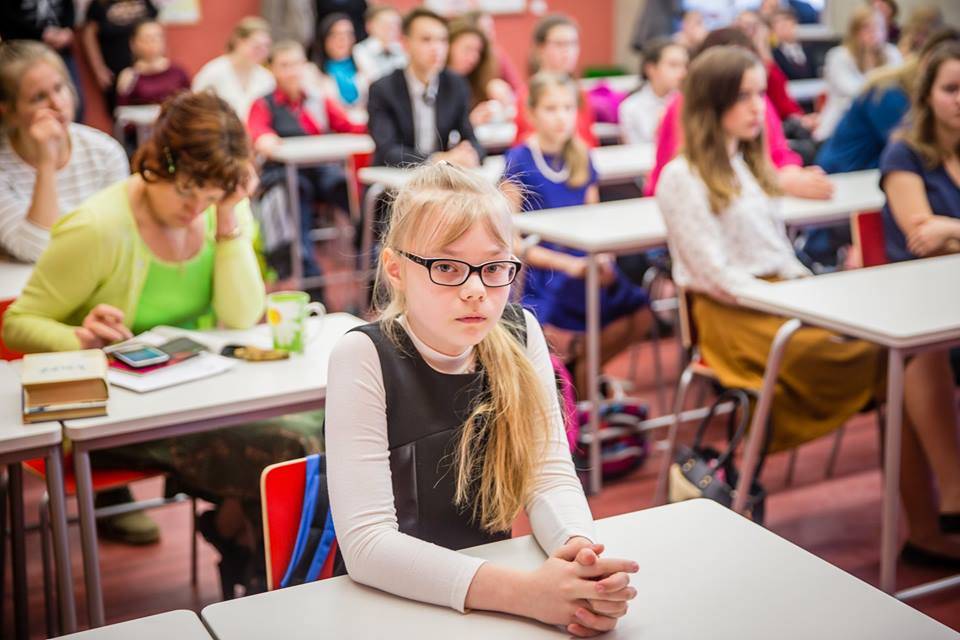According to the Programme for International Student Assessment, a premier global metric for education, the results of Estonian 15-year-olds are the best in Europe and among the strongest in the world.
Pupils from China, Singapore, Macao (China), Hong Kong, Estonia, Japan, South Korea, Canada, Taiwan and Finland achieved the best results in the latest PISA study, compiled by the Organisation for Economic Co-operation and Development and published on 3 December 2019.
Estonia’s 15-year-olds rank first in reading, science and mathematics in Europe while in the world; the country’s students rank fifth in reading, eighth in mathematics and fourth in sciences.

In reading, which was the focus of PISA 2018, Estonia, Canada, Finland and Ireland were the highest-performing OECD countries. In science, the highest-performing OECD countries were Japan and Estonia. In mathematics, the highest-performing OECD countries were Japan, Korea and Estonia. China, Singapore, Estonia, Canada, Finland, Ireland, Japan and Korea scored above the OECD average in all three subjects, as did Macao (China), Hong Kong, Taiwan, Sweden, New Zealand, the United Kingdom, Denmark, Germany, Slovenia, Belgium and France.
Growth mindset
The Estonian Ministry of Education and Science pointed out that the number of top performers has also increased, compared with the last PISA assessment in 2015. “13.9% of [Estonian] students are able to solve complicated and very complicated tasks, compared with the OECD average of 8.5%,” the ministry said in a press release.
According to the study, majority (77%) of Estonian students exhibit growth mindset – they believe they are capable of improving their intelligence and are willing to put effort into their own development in order to secure a better future. This is the highest among the OECD countries. 70% of students plan to attain higher education; the most popular professions are ICT specialist, doctor, CEO, architect and psychologist.

The latest PISA study also points out that there is a large number of students in Estonia who despite socio-economic disadvantage attain a high level of academic proficiency. “While an inadequately resourced education system cannot deliver good results, Estonia, with a level of expenditure on education that is about 30% lower than the OECD average, is nevertheless one of the top-performing OECD countries in reading, mathematics and science,” the study said.
Gaps between boys and girls and Estonians and Russians
But there are also issues, one of them being the gap between boys and girls, for the benefit of the latter. “While the differences in results between boys and girls in reading literacy has decreased and both genders have improved significantly, the share of low-performing boys is larger than we would like,” the country’s education ministry said.
The other ongoing issue is the gap between the Estonian and Russian speaking schools in the country – pupils at Estonian-speaking schools are performing better in the tests. “The consistent gap shows that more attention must be paid to training teachers and headmasters,” the education ministry said, while pointing out that students at Estonia’s Russian speaking schools still performed above the OECD average.

Identifying education trends
PISA was introduced in 2000 and has tested pupils every three years since, providing an opportunity to identify education trends worldwide.
The following is surveyed in PISA:
- How well-prepared young people are to face the challenges ahead
- Are the students capable of analysing, finding causes and presenting their own ideas
- How capable students are in applying their skills and knowledge in real life situations
Estonia has been participating in PISA surveys since 2006. The OECD’s PISA 2018 tested 600,000 students in 79 countries and economies. PISA focuses on the 15-year-olds because at this age, students in many OECD countries graduate compulsory education and decide their next steps.
Read also: The recipe for success in the Estonian basic education system.
Cover: Pupils at Pärnu Sütevaka High School of Humanities in Estonia (the image is illustrative/Pärnu Sütevaka High School of Humanities).

